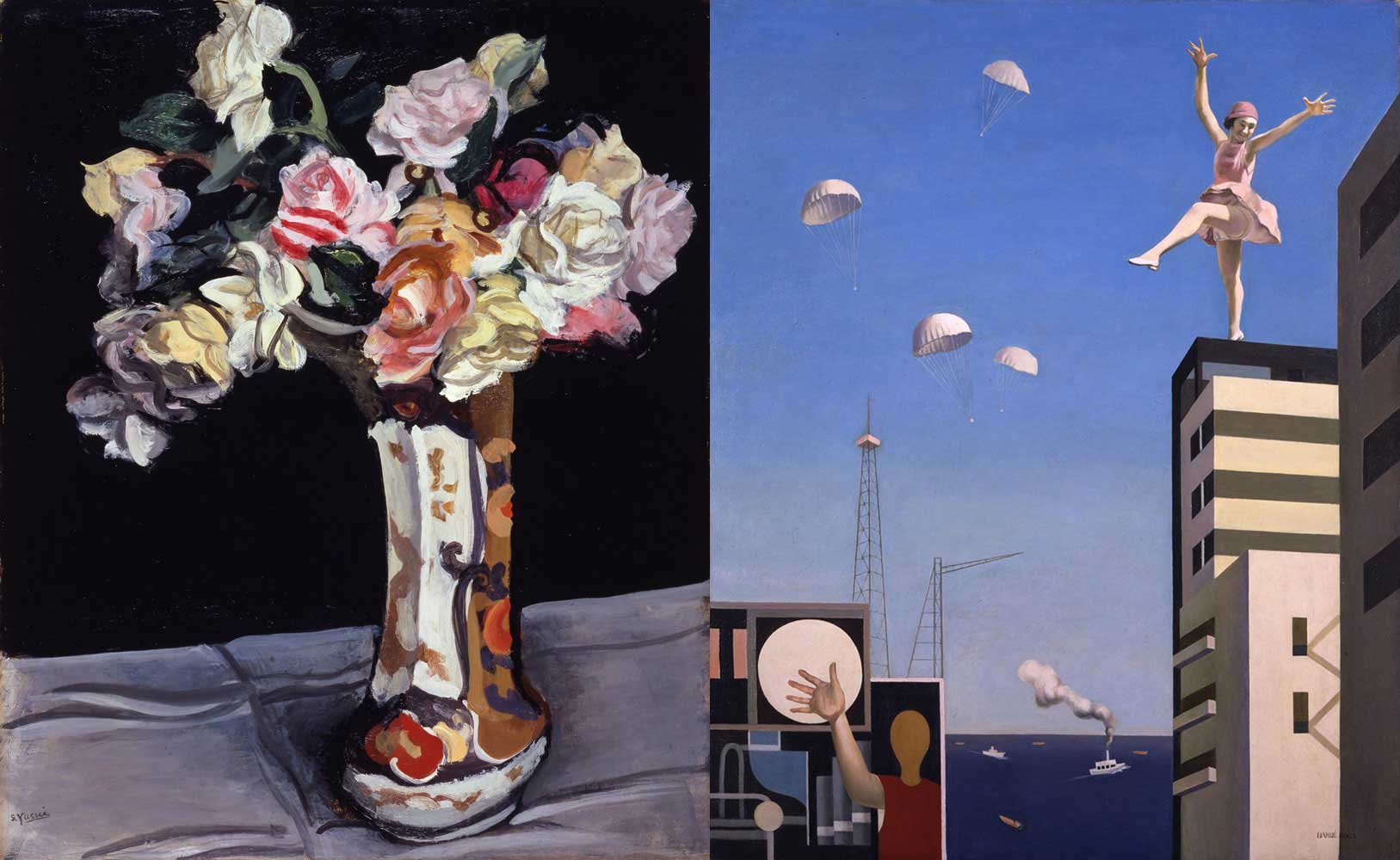"Art and Literature in Japan 1926-1936" follows the close of the Taisho Era (1912-1926), which was characterized by democracy, artistic experimentation and widespread social self-absorptions by the citizenry in new fashions such as the "beach pajama" outfits of "modern" girls. The successive Showa Era (1926-1989) inherited this optimism, though seismic shifts for the arts and society in general were brought about as Japan embarked on its Fifteen Year War beginning in 1931. For the arts, these years saw a rocking back and forth between freedoms and restrictions, the latter winning out.
The exhibition actually begins with the 1923 Great Kanto Earthquake as a stimulus for the arts, along with the rebuilding of Tokyo as a modern metropolis. This was also the year the avant-garde painter and sculptor Tomoyoshi Murayama returned from Berlin to inaugurate the abstract Russian Constructivism of his group Mavo. The group's agenda took on a Socialist bent in the aftermath of the earthquake and this foretold the conservative shift toward Soviet-style Social Realism that widely inhered at the end of the 1920s.
Tokyo's rapid urbanization occasioned an underclass of laborers, who became the subject of art, along with the city itself and Communist politics of the mid-'20s to early '30s. Such works came under the banner of Proletarian art, which was spurred by Japan's 1927 financial crisis and the world depression of 1929. An important early painting was Toki Okamoto's "Attack at the Factory by the Strikers (Restored Painting)" (1924/79). The original was apparently bought by a member of the Soviet Embassy who subsequently took it home to Russia

















With your current subscription plan you can comment on stories. However, before writing your first comment, please create a display name in the Profile section of your subscriber account page.